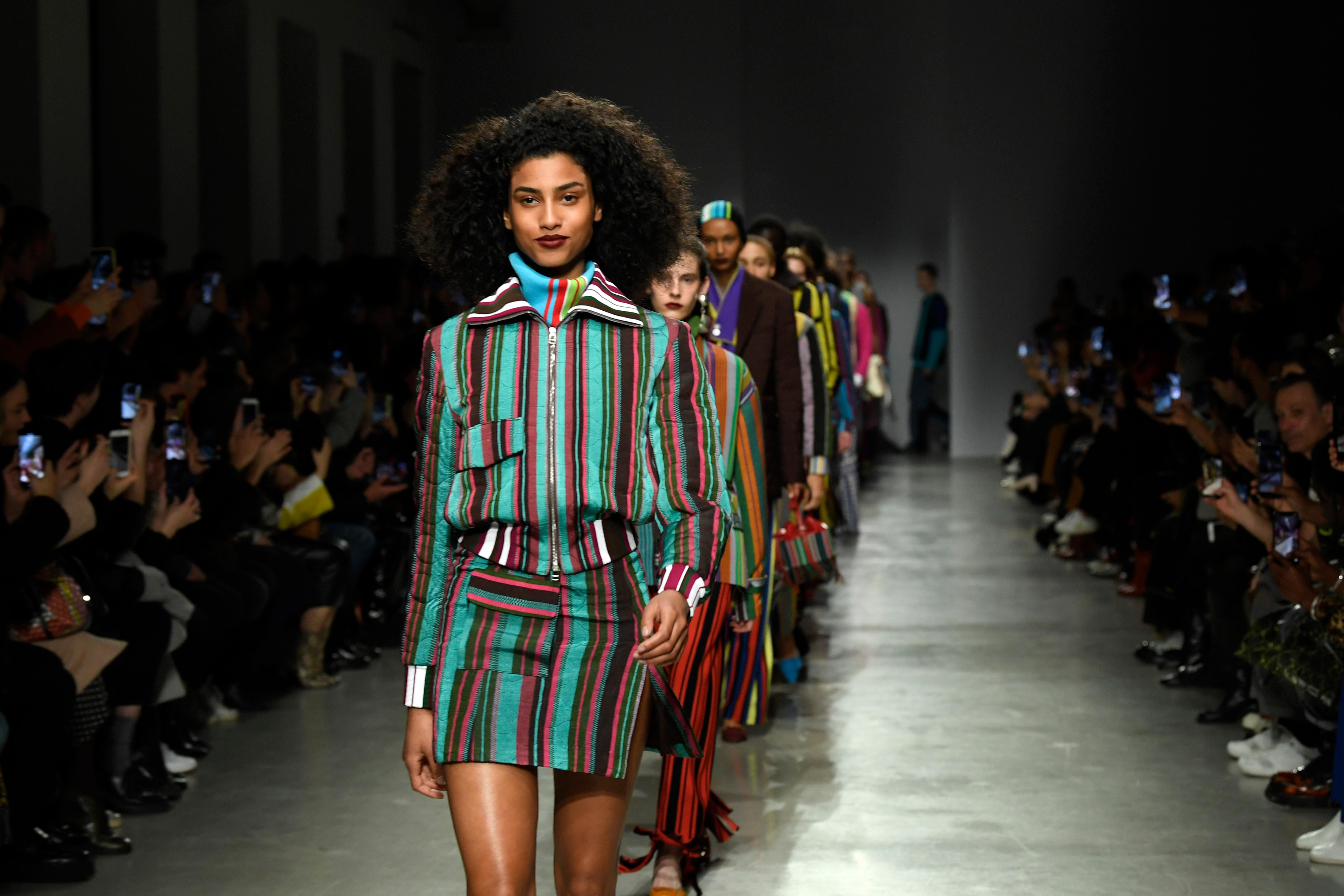
IN FULL FLIGHT. KENNETH IZE SOARS IN PARIS, AS NAOMI CAMPBELL CLOSES HIS SPECTACULAR FALL WINTER SHOW

Instead of taking a sombre, sheepish bow at the conclusion of his show, Nigerian designer Kenneth Ize ran out from behind the wings with his arms spread like an eagle, smiling. Grinning from ear to ear, he had a lot to smile about. After being an LVMH prize finalist last September, this was his first show at Paris Fashion Week, and what a debut it was.
Ize first caught the gaze of the fashion world just last year at Lagos Fashion Week, where he summoned the supermodel powers of Naomi Campbell and Imaan Hammam, who walked in his show wearing designs using the traditional Nigerian fabric, asoke. It is this, the artisanal craftsmanship and traditional textiles of his native Nigeria, which is at the centre of his eponymous label, his design journey both an exploration of – and homage to – African craft and heritage.
Dedicated to its preservation, Ize works with a small community of asoke weavers in Nigeria, reinterpreting examples of Nigerian craft to form an original perspective on luxury fashion while nurturing existing cultural practise. Through his lens, the work of local Nigerian artisanship comes to life on a global stage; his Fall Winter 2020 show in Paris the most profound example of this.
A pastiche of brilliant colour, deft tailoring and exceptional textile, Imaan Hammam opened the show in a quilted twin-set, a mini skirt and matching zipper jacket in bold cyan and salmon stripe. Underneath, the flash of a funnel neck in contrast stripe, the first glimpse of what was to come. What followed was a study in colour and print and glorious incongruity, a visual feast both sumptuous and striking.
There was elegant tailoring in the form of Peter Pan-collared blazers and tapered trousers, but there was also inflated and relaxed proportion; oversized tunics over pants, deconstructed shirts, spacious sweaters.
But what’s fast-becoming Ize’s trademark is, of course, his take on textile. The wrap yarns left fringed at the tailcoats of trousers, belt bags and clutches were nothing short of spectacular (and tie back to the fashion’s current fringing movement). The cultural motifs continued throughout the collection, iterations of asoke exquisitely executed for both men and women.
